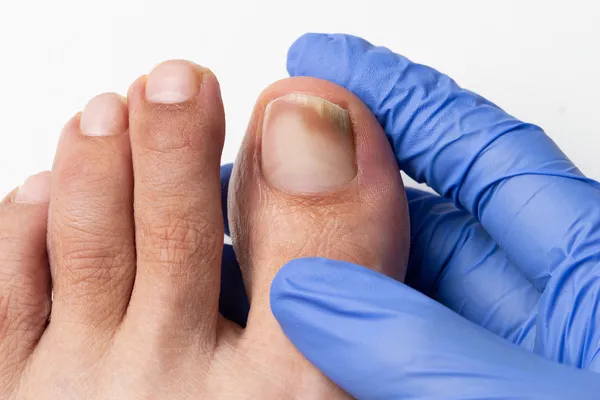Toe infections can be both painful and frustrating, often disrupting daily activities and making even simple tasks uncomfortable. Whether it’s due to an ingrown toenail, fungal infection, or bacterial growth, it’s important to address toe infections promptly. Fortunately, with the right approach, healing a toe infection is manageable, and preventing future infections is achievable with some mindful care. In this article, we will explore how to heal a toe infection and, more importantly, how to avoid them in the future.
Understanding the Causes of Toe Infections
Toe infections are caused by various factors, such as bacteria, fungi, or ingrown toenails. Some common sources of toe infections include:
- Ingrown Toenails: When a toenail grows into the surrounding skin, it can lead to infection, swelling, and redness.
- Fungal Infections: Conditions like athlete’s foot or toenail fungus thrive in warm, moist environments and can cause infection if left untreated.
- Cuts or Injuries: Open wounds on the feet, no matter how small, can serve as an entry point for bacteria.
- Improper Foot Hygiene: Neglecting foot care, such as not washing and drying the feet regularly, can lead to bacterial and fungal growth.
- Diabetes or Compromised Immunity: Individuals with diabetes or weakened immune systems are more susceptible to infections due to decreased blood circulation and slower healing times.
How to Heal a Toe Infection
Healing a toe infection requires a combination of good hygiene, topical treatments, and sometimes medical intervention, depending on the severity of the infection. Here’s a step-by-step guide on how to heal a toe infection:
1. Keep the Area Clean and Dry
Proper hygiene is crucial when healing a toe infection. Start by washing the infected toe gently with warm water and mild soap. This helps to remove dirt, bacteria, and any discharge from the infection. After washing, dry the area thoroughly, as moisture can encourage bacterial and fungal growth.
2. Soak in Warm Salt Water
Soaking your toe in a warm saltwater solution can help reduce swelling and promote healing. Dissolve one tablespoon of Epsom salt in a basin of warm water and soak your foot for 15-20 minutes. This helps to reduce pain, cleanse the area, and draw out any infection. Repeat this process 2-3 times daily until the infection begins to heal.
3. Apply Antiseptic Cream or Ointment
Once the toe is clean and dry, apply an over-the-counter antiseptic cream or ointment, such as Neosporin, to the infected area. This helps to prevent further bacterial growth and aids in the healing process. Cover the toe with a sterile bandage to keep it protected from dirt and bacteria.
4. Use Antibiotics if Necessary
For more severe bacterial infections, especially if you notice pus, spreading redness, or increased swelling, it may be necessary to consult a doctor. They may prescribe oral antibiotics to combat the infection from within. Follow the prescribed course of antibiotics fully, even if the infection appears to clear up before the medication is finished.
5. Address Fungal Infections with Antifungal Creams
If your infection is due to a fungal issue like athlete’s foot or toenail fungus, antifungal creams, sprays, or powders may be required. Over-the-counter treatments, such as Lotrimin or Lamisil, can be effective in treating mild to moderate fungal infections. However, for more persistent cases, a doctor may prescribe stronger antifungal medications.
6. Avoid Tight or Ill-Fitting Shoes
Wearing shoes that pinch or rub against the infected toe can exacerbate the problem. Opt for comfortable, breathable footwear that allows your toes to move freely. This reduces pressure on the infected toe and promotes faster healing.
7. Don’t Attempt to Drain or Cut the Infection
While it may be tempting to try and drain pus or cut away infected tissue, this can make the infection worse and introduce more bacteria. It’s always best to leave this to a healthcare professional who can safely treat the area without causing further harm.
How to Prevent Future Toe Infections
Once your toe infection has healed, the next step is preventing future infections. Consistent foot care and proper hygiene are key to keeping your feet healthy and infection-free. Here are some tips to help you prevent future infections:
1. Practice Good Foot Hygiene
Wash your feet daily with warm water and mild soap, making sure to clean between your toes. After washing, dry your feet thoroughly to prevent moisture buildup, especially between the toes, which can lead to fungal infections.
2. Trim Toenails Properly
When trimming your toenails, cut them straight across to avoid creating sharp edges that can dig into the skin. Avoid cutting them too short, as this can increase the risk of ingrown toenails, which can lead to infections.
3. Wear Proper Footwear
Choose shoes that fit well and allow your feet to breathe. Shoes that are too tight can cause pressure on your toes, leading to injuries and infections. If you’re prone to fungal infections, consider wearing moisture-wicking socks to keep your feet dry throughout the day.
4. Avoid Walking Barefoot in Public Areas
Public places like locker rooms, swimming pools, and gym showers are breeding grounds for bacteria and fungi. Always wear flip-flops or water shoes in these environments to avoid picking up an infection.
5. Use Antifungal Powder or Spray
If you’re prone to fungal infections, using antifungal powder or spray in your shoes and on your feet can help keep infections at bay. These products absorb moisture and prevent the growth of fungi.
6. Check Your Feet Regularly
Perform regular self-checks on your feet, especially if you have diabetes or a compromised immune system. Look for any signs of redness, swelling, or injury, and address any potential issues before they develop into infections.
7. Keep Your Immune System Strong
A strong immune system helps your body fight off infections more effectively. Eating a balanced diet, exercising regularly, and getting enough sleep can support your immune system and overall health.
When to Seek Medical Attention
While mild toe infections can often be treated at home, there are times when medical intervention is necessary. If you experience any of the following symptoms, it’s important to see a doctor:
- Persistent or worsening pain
- Increased redness, swelling, or warmth around the infection
- Pus or discharge
- Fever or chills
- Red streaks spreading from the infection site (a sign of cellulitis)
In conclusion, knowing how to heal a toe infection is just as important as taking preventive measures to avoid future infections. With good hygiene practices, proper foot care, and quick attention to potential problems, you can keep your feet healthy and free from infections for years to come. By following the steps outlined above, you can ensure your toes stay in tip-top shape!




